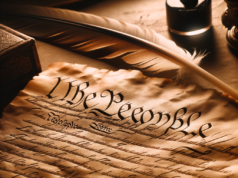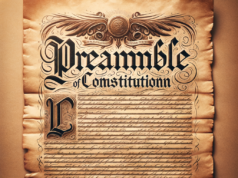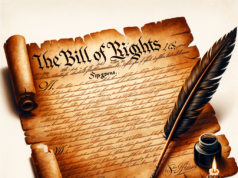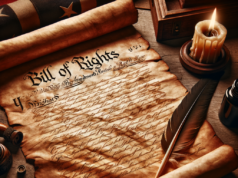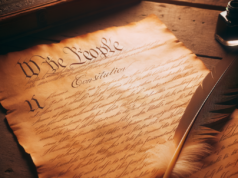
A Quick History Lesson on the Constitution
Introduction
The United States Constitution is a foundational document that shapes the political and legal framework of the United States. It is a remarkable testament to the vision, intellect, and foresight of its framers, who sought to create a more perfect union. In this brief history lesson, we will explore the origins, drafting, and significance of the U.S. Constitution.
Origins of the Constitution
1. The Articles of Confederation: The United States, after gaining independence from Britain in 1783, initially operated under the Articles of Confederation. However, this document proved ineffective in providing a centralized government capable of addressing the nation’s needs. States retained significant sovereignty, leading to economic instability and political turmoil.
2. The Constitutional Convention of 1787: Frustrated by the limitations of the Articles of Confederation, a group of delegates from 12 states (Rhode Island abstained) convened in Philadelphia in May 1787 to draft a new constitution. This gathering, known as the Constitutional Convention, was presided over by George Washington and included prominent figures such as James Madison, Benjamin Franklin, Alexander Hamilton, and others.
The Drafting of the Constitution
3. The Virginia Plan: James Madison, often called the “Father of the Constitution,” presented the Virginia Plan, which proposed a strong central government with a bicameral legislature, proportional representation based on population, and a strong executive and judiciary. This plan served as a blueprint for much of the Constitution.
4. The Connecticut Compromise: A significant challenge at the convention was reconciling the interests of large and small states regarding representation in the new government. The Connecticut Compromise, proposed by Roger Sherman, created a compromise with a bicameral legislature: the House of Representatives with representation based on population and the Senate with equal representation for each state.
5. The Three-Fifths Compromise: Another contentious issue was the counting of enslaved individuals for the purpose of representation and taxation. The Three-Fifths Compromise determined that each enslaved person would count as three-fifths of a free person when determining representation and taxation.
6. The Bill of Rights: A crucial debate emerged over the inclusion of a Bill of Rights to protect individual liberties. Prominent Anti-Federalists, including Thomas Jefferson and Patrick Henry, advocated for this addition. As a result, the first ten amendments to the Constitution, collectively known as the Bill of Rights, were ratified in 1791.
The Significance of the Constitution
7. Ratification and Adoption: After months of debate and compromise, the Constitution was signed by 39 delegates on September 17, 1787. It was then sent to the states for ratification. A series of essays known as the Federalist Papers, written by James Madison, Alexander Hamilton, and John Jay, played a vital role in explaining and advocating for the Constitution’s adoption.
8. Ratification: The Constitution was ratified when nine states agreed to it, with North Carolina and Rhode Island eventually joining the union. The new government under the Constitution officially began on March 4, 1789, when the first Congress convened.
9. Enduring Legacy: The U.S. Constitution has endured for over two centuries and remains the oldest written national constitution still in use. It has served as a model for other nations and continues to be a source of inspiration and guidance in American political life.
Conclusion
The U.S. Constitution is a product of intense debate, compromise, and the shared vision of its framers. It established a federal system of government with a delicate balance of powers between the federal government and individual states. The Constitution’s enduring relevance lies in its ability to adapt to changing times while preserving the core principles of democracy, liberty, and the rule of law. It remains a testament to the enduring principles upon which the United States was founded and a beacon of hope for those who cherish the ideals of freedom and self-governance.
Delegates from twelve of the original thirteen states met to discuss and write the Constitution. The man credited with most of the writing was James Madison. He is, in fact, considered to be the “father of the Constitution.”
However, all of the delegates contributed to writing the Constitution. The men met to discuss the rights which they thought should be granted to every United States citizen. In addition, it was determined that any changes to the Constitution would require the approval of at least nine of the thirteen states.
The Constitution was written in order to grant more power to the larger states. In addition, Madison included branches of the government that would have power over very specific issues and jurisdictions, which included a system of checks and balances so that no person or entity in the Government would have too much power.
Constitution laws has more information on the writing of the Constitution.



